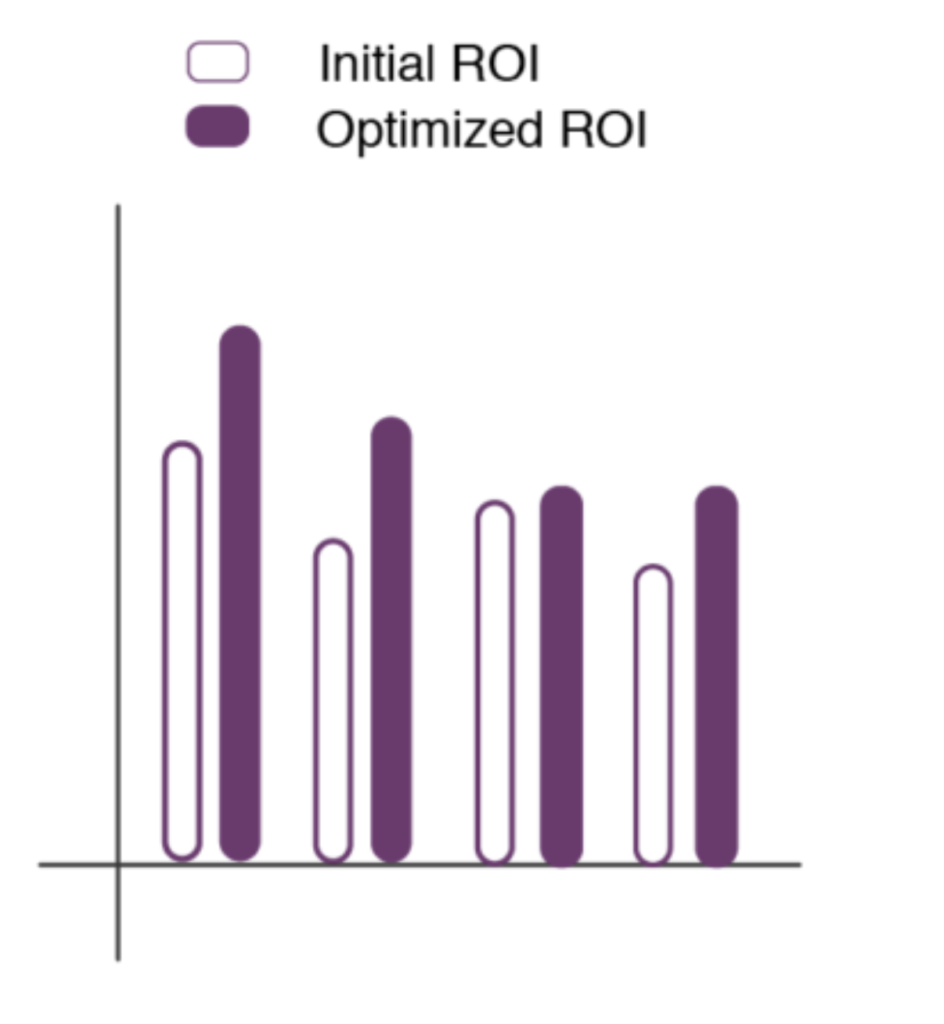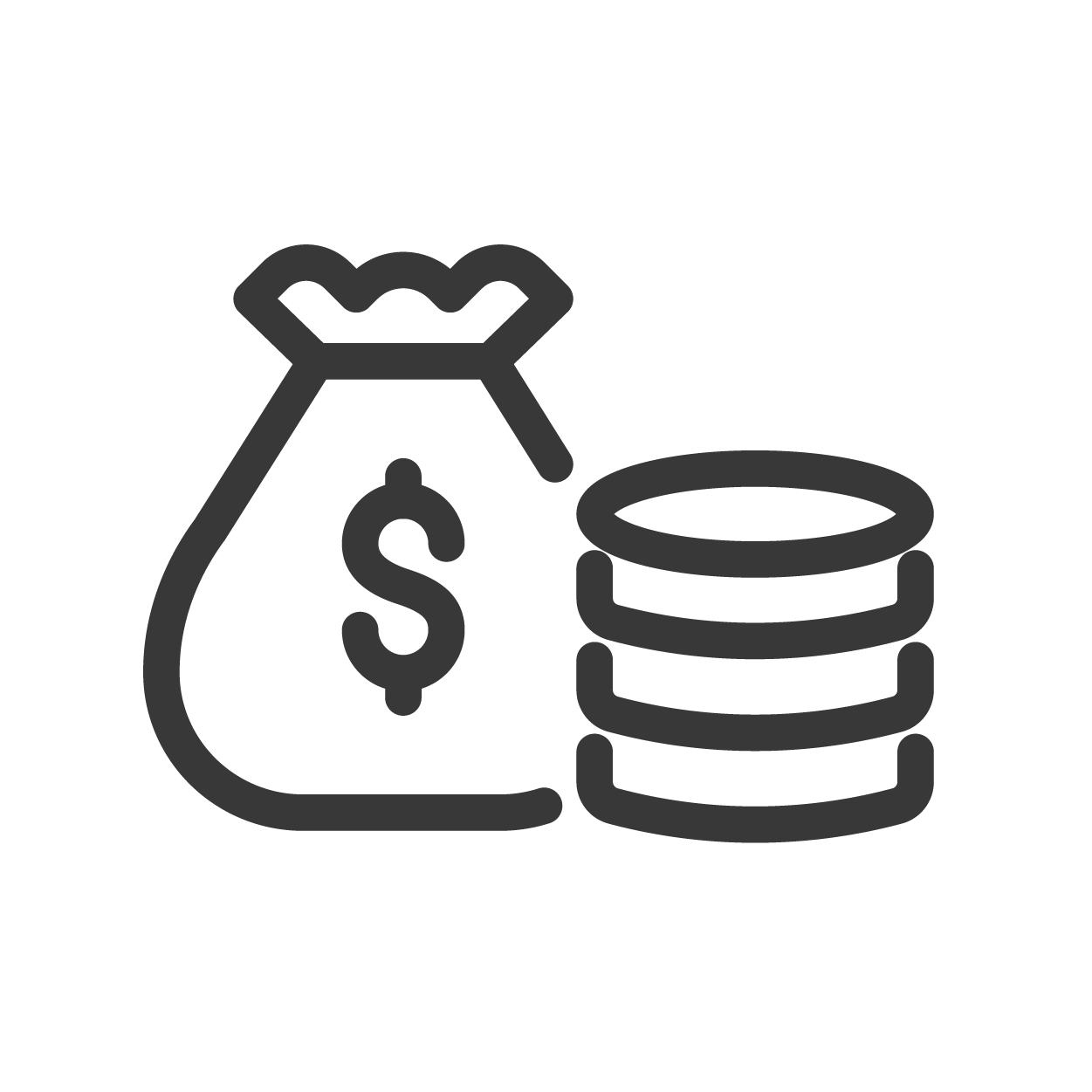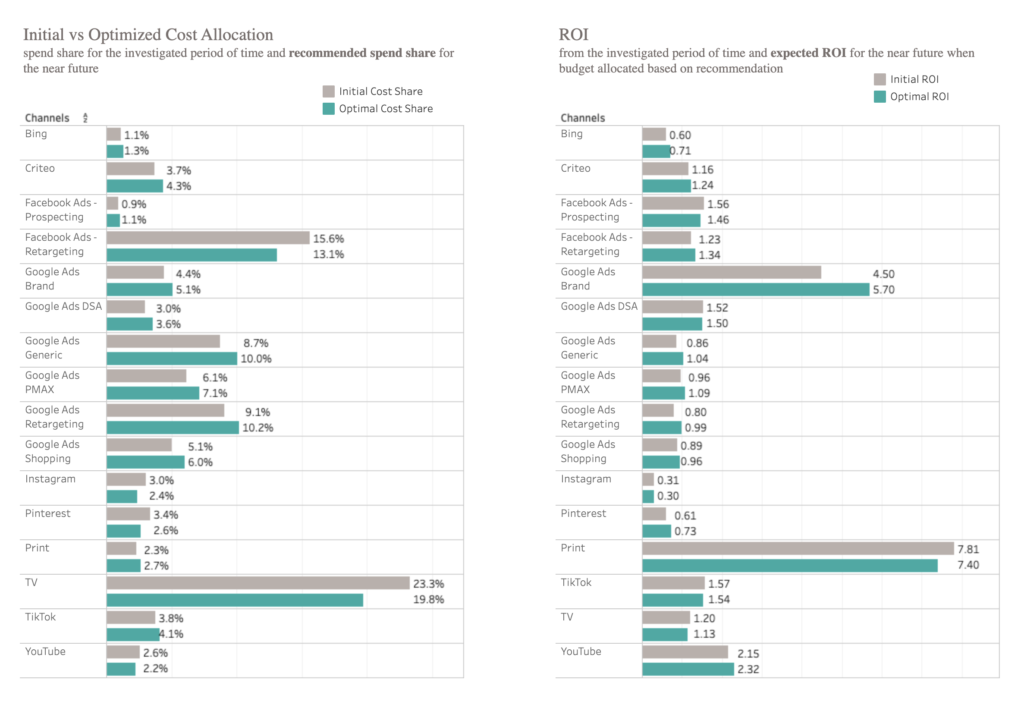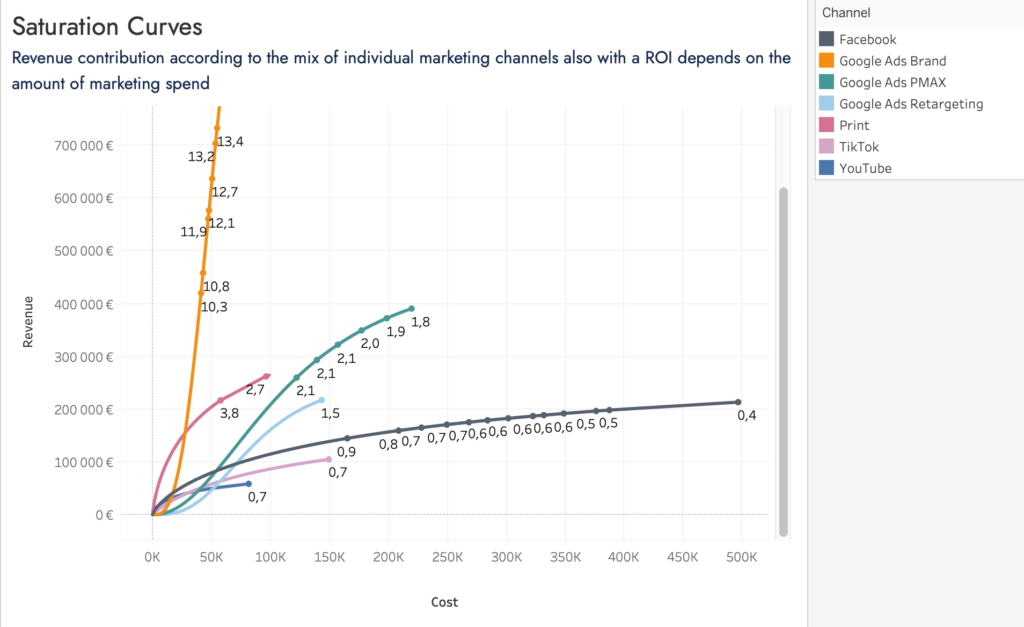Optimize your Marketing ROI and Cost Efficiency. In a Cookieless World.
Marketing Mix Modelling
Introduction to MMM
Understand the Real Impact of your Marketing Activities on Sales
Marketing Mix Modelling (MMM) is statistical modelling technique to quantify the relationship between channel marketing investments (and media exposure – impressions, GRPs,…) and their effect on sales, or even other target metrics such as user acquisition or app installs.
MMM is a solution for marketing managers, CMOs and other executives with marketing and revenue responsibility to understand and measure the impact of marketing and to optimize budget allocation in order to improve their marketing ROI.

Key Benefits of MMM in a Nutshell

Budget Optimization
MMM shows the optimal budget allocation

Cookieless Approach
No cookie dependent input data needed

Covers Online and Offline Channels

Long-term Effects
Measures long-term effects on advertising
Key Benefits of MMM in a Nutshell

Budget
Optimization
MMM shows the optimal budget allocation

Cookieless
Approach
No cookie dependent input data needed

Covers Online and Offline Channels
Not only digital but TV, print and other offline channels as well

Long-term
Effects
Measures long-term effects on advertising
What MMM Solves
Key Challanges in Measurement & Marketing Cost Efficiency
How much sales (online and offline) did each media channel drive?
How would sales be impacted if I made "X" change to my marketing plan?
How much incremental revenue do trade and promotional activities drive?
How should I allocate budget by channel in order to maximize my KPIs?
What is the optimal level of spend for each marketing channel?
Where should the dollars come from if I needed to cut my marketing budget by X %?
Challenge 1
Missing Actionable Insights for Key Marketing Questions
Despite having reports and “analytics” in every possible tool, marketing and revenue executives still don’t get the actionable insights and answers they need:
Challenge 1
Missing Actionable Insights for Key Marketing Questions
Despite having reports and “analytics” in every possible tool, marketing and revenue executives still don’t get the actionable insights and answers they need:
How much sales (online and offline) did each media channel drive?
How would sales be impacted if I made "X" change to my marketing plan?
How much incremental revenue do trade and promotional activities drive?
How should I allocate budget by channel in order to maximize my KPIs?
What is the optimal level of spend for each marketing channel?
Where should the dollars come from if I needed to cut my marketing budget by X %?
Challenge 2
- iOS 14 changes
- 3rd party cookies deprecation
- Consumer moving between online and offline all the time
- 10+ internet connected devices per household on average
- Explosive growth of marketing tools each having their own reporting methodology to “prove” their value
- Decline in trackability making difficult to get reliable insights from Multi-Touch Attribution tools
Learn how MMM can help you solve these issues
Learn how MMM can help you solve these issues
Sample MMM Results
Identify Hidden Opportunities for Growth or Cost Savings

Optimal vs actual levels of spend and ROI by channels

Revenue contribution according to the mix of individual marketing channels. Relationship between weekly cost and generated revenue
Features
Automated MMM Solution Based on Machine Learning
Budget Optimizer
Find the best allocation of marketing budget among all channels to achieve best possible revenue.
Clear recommendations where you should increase / descrease spend and by how much.
Typical opportunity is 8-15% of cost savings.
Use this feature for automated monthly KPI setting for all channels.
Understanding incrementality
Identify true incremental effect on revenue (or profit or app installs or new customer acquisition…).
Mi.MMM can be calibrated using marketing tests and experiments for ground truth.
Identify and measure long term effect of brand building or other non-performance marketing activities.
Planning And Scenario Modelling
Model various scenarios “what would happen if I change investment in channel X by Y” using intuitive UI.
Try different constraints such as “Investment into TV can increase by 20% maximum over last year” and find best budget allocation given those constraints.
Incorporate expected changes in media prices.
Automated data Integration
Online media data, offline media data, external signals like weather etc – all can be ingested automatically.
Market and competitor level data.
Continuous Insights
Daily updated model results and insights available to you through UI and integration to leading BI tools (Tableau, PowerBI, Google Data Studio,…).
Results and signals from Mi.MMM can be integrated with your bidding platforms and tools.
Cookieless & Privacy-Safe
No need for user-level data or cookies-based data.
Privacy-first solution.
How Much Does it Cost
Tiers & Pricing
Basic
-
One time marketing mix model and analysis
-
Data preparation and assessment
-
Budget optimization (1 scenario)
-
Visualization in Looker Studio
-
Executive summary for senior managment
-
Workshop with our consultants to discuss results
Professional
-
Automated MMM with weekly model + results updates
-
Suitable for ongoing marketing optimization
-
Interactive budget optimizer
-
Tableau, PowerBI or Google Data Studio visualizations
-
Continuous insights
-
Automated data ingestion + preparation
-
No long-term commitment
-
Support via email
-
No IT needed for implementation
MMM Enterprise
-
For larger teams with custom data and analytics needs
-
Unlimited models (eg for multiple brands, countries or business KPIs)
-
Custom optimization tasks
-
Dedicated consultant / analyst
-
Regular insights and recommendations for your marketing team
-
Comprehensive internal team training
-
Enterprise-level SLA
-
Cloud or on-premise deployment
Resources
Marketing Mix Modelling and Attribution Modelling have the same basic goal: measure the business impact of marketing channels and find out how to allocate marketing budget between channels in order to achieve the best possible results. The key difference between the two methods is that MMM analyzes effectiveness of marketing budget distribution from a top-down perspective, while attribution models are calculated at the level of a specific user (bottom-up approach).
Resources
Marketing Mix Modelling and Attribution Modelling have the same basic goal: measure the business impact of marketing channels and find out how to allocate marketing budget between channels in order to achieve the best possible results. The key difference between the two methods is that MMM analyzes effectiveness of marketing budget distribution from a top-down perspective, while attribution models are calculated at the level of a specific user (bottom-up approach).
